-
 Bitcoin
Bitcoin $108,017.2353
-0.81% -
 Ethereum
Ethereum $2,512.4118
-1.58% -
 Tether USDt
Tether USDt $1.0002
-0.03% -
 XRP
XRP $2.2174
-1.03% -
 BNB
BNB $654.8304
-0.79% -
 Solana
Solana $147.9384
-1.76% -
 USDC
USDC $1.0000
-0.01% -
 TRON
TRON $0.2841
-0.76% -
 Dogecoin
Dogecoin $0.1636
-2.09% -
 Cardano
Cardano $0.5726
-1.72% -
 Hyperliquid
Hyperliquid $39.1934
1.09% -
 Sui
Sui $2.9091
-0.59% -
 Bitcoin Cash
Bitcoin Cash $482.1305
0.00% -
 Chainlink
Chainlink $13.1729
-1.54% -
 UNUS SED LEO
UNUS SED LEO $9.0243
-0.18% -
 Avalanche
Avalanche $17.8018
-1.90% -
 Stellar
Stellar $0.2363
-1.69% -
 Toncoin
Toncoin $2.7388
-3.03% -
 Shiba Inu
Shiba Inu $0.0...01141
-1.71% -
 Litecoin
Litecoin $86.3646
-1.98% -
 Hedera
Hedera $0.1546
-0.80% -
 Monero
Monero $311.8554
-1.96% -
 Dai
Dai $1.0000
-0.01% -
 Polkadot
Polkadot $3.3473
-2.69% -
 Ethena USDe
Ethena USDe $1.0001
-0.01% -
 Bitget Token
Bitget Token $4.3982
-1.56% -
 Uniswap
Uniswap $6.9541
-5.35% -
 Aave
Aave $271.7716
0.96% -
 Pepe
Pepe $0.0...09662
-1.44% -
 Pi
Pi $0.4609
-4.93%
What is the state transition of the blockchain?
State transition in blockchain involves validating transactions and updating the network's state, ensuring security and integrity through consensus mechanisms.
Apr 12, 2025 at 01:28 am
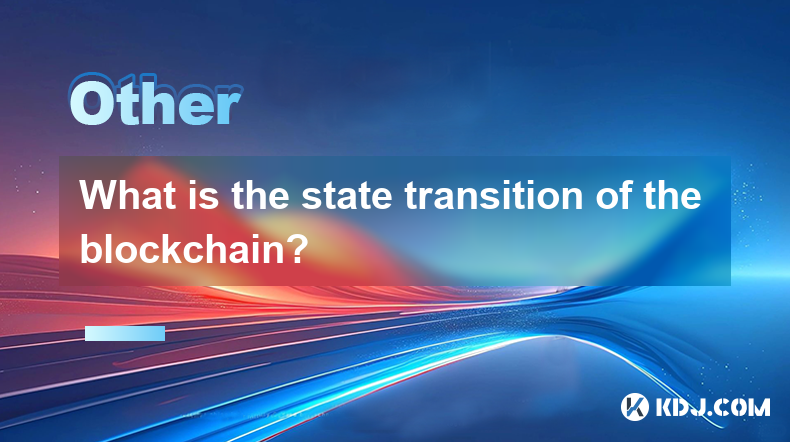
The concept of state transition in blockchain technology is fundamental to understanding how these systems function. A blockchain's state transition refers to the process by which the state of the blockchain changes from one block to the next. This process is governed by the rules of the blockchain's consensus mechanism and is crucial for maintaining the integrity and security of the network. In essence, state transition is about how transactions are validated and recorded, ultimately leading to a new state of the blockchain.
Understanding Blockchain State
The state of a blockchain represents the current condition of the entire network at any given point in time. This includes the balance of all accounts, the status of smart contracts, and any other relevant data stored on the blockchain. The state is essentially a snapshot of the blockchain's data, which is updated with each new block that is added to the chain.
The Role of Transactions in State Transition
Transactions are the primary drivers of state transitions in a blockchain. Each transaction represents a change in the state, such as transferring cryptocurrency from one account to another or executing a function in a smart contract. When a transaction is validated and included in a block, it contributes to the new state of the blockchain. The validation process involves checking the transaction against the rules of the blockchain to ensure its validity and integrity.
The Consensus Mechanism and State Transition
The consensus mechanism plays a critical role in state transitions. It is the process by which nodes on the network agree on the validity of transactions and the new state of the blockchain. Different blockchains use different consensus mechanisms, such as Proof of Work (PoW), Proof of Stake (PoS), or Delegated Proof of Stake (DPoS). Each mechanism has its own way of achieving consensus, but the end goal is the same: to ensure that all nodes agree on the new state of the blockchain.
The Process of State Transition
The process of state transition can be broken down into several key steps:
- Transaction Submission: A user submits a transaction to the network, which is then broadcast to all nodes.
- Transaction Validation: Nodes on the network validate the transaction according to the blockchain's rules. This includes checking the sender's balance, the transaction's signature, and any other relevant criteria.
- Block Creation: Validated transactions are grouped into a block by a miner or validator, depending on the consensus mechanism.
- Block Validation: The block is then validated by other nodes on the network. This involves verifying the transactions within the block and ensuring that the block adheres to the blockchain's rules.
- State Update: Once the block is validated and added to the blockchain, the state of the blockchain is updated to reflect the changes introduced by the transactions in the block.
Example of State Transition in Ethereum
To illustrate the concept of state transition, let's consider an example from the Ethereum blockchain. Suppose Alice wants to send 1 ETH to Bob. Here's how the state transition would occur:
- Initial State: Alice has 2 ETH, and Bob has 0.5 ETH.
- Transaction Submission: Alice submits a transaction to send 1 ETH to Bob.
- Transaction Validation: Nodes on the Ethereum network validate the transaction, ensuring that Alice has sufficient funds and that the transaction is properly signed.
- Block Creation: A miner groups Alice's transaction with other transactions into a block.
- Block Validation: Other nodes on the network validate the block, ensuring that all transactions within it are valid.
- State Update: Once the block is added to the Ethereum blockchain, the state is updated. Alice now has 1 ETH, and Bob has 1.5 ETH.
The Importance of State Transition in Blockchain Security
State transition is crucial for the security of a blockchain. By ensuring that each transaction is validated and that the new state is agreed upon by the network, blockchains can prevent fraudulent activities and maintain the integrity of the data. Any attempt to alter the state of the blockchain without following the proper validation and consensus processes would be detected and rejected by the network.
State Transition and Smart Contracts
In blockchains that support smart contracts, such as Ethereum, state transition also involves the execution of smart contract functions. When a user interacts with a smart contract, the contract's code is executed, and the state of the contract is updated accordingly. This process is also governed by the blockchain's consensus mechanism, ensuring that the state of the smart contract is accurately reflected in the blockchain's state.
State Transition in Different Blockchain Platforms
Different blockchain platforms may implement state transition in slightly different ways, but the core concept remains the same. For example, Bitcoin's state transition primarily involves updating the balance of addresses, while Ethereum's state transition includes both balance updates and smart contract state changes. Understanding these differences can provide insight into the unique features and capabilities of various blockchain platforms.
Frequently Asked Questions
Q: How does state transition affect the scalability of a blockchain?
A: State transition can impact the scalability of a blockchain because each transaction requires validation and consensus, which can be time-consuming and resource-intensive. Solutions like sharding and layer-2 scaling technologies aim to improve scalability by processing state transitions more efficiently.
Q: Can state transitions be reversed on a blockchain?
A: In most blockchains, state transitions are designed to be irreversible once they are confirmed and added to the blockchain. This immutability is a key feature of blockchain technology. However, in some cases, a hard fork can be used to reverse state transitions, but this is a rare and controversial action.
Q: How do different consensus mechanisms affect state transition?
A: Different consensus mechanisms can affect the speed and security of state transitions. For example, Proof of Work (PoW) can be slower but highly secure, while Proof of Stake (PoS) can be faster and more energy-efficient. The choice of consensus mechanism influences how quickly and reliably state transitions occur on a blockchain.
Q: What role do nodes play in state transition?
A: Nodes play a crucial role in state transition by validating transactions and blocks. Full nodes maintain a complete copy of the blockchain and participate in the consensus process, ensuring that state transitions are accurate and secure. Light nodes, on the other hand, rely on full nodes for validation but still contribute to the network's overall health.
Disclaimer:info@kdj.com
The information provided is not trading advice. kdj.com does not assume any responsibility for any investments made based on the information provided in this article. Cryptocurrencies are highly volatile and it is highly recommended that you invest with caution after thorough research!
If you believe that the content used on this website infringes your copyright, please contact us immediately (info@kdj.com) and we will delete it promptly.
- Chainlink's Bullish Blueprint: Price Prediction and the Harmonic Pattern
- 2025-07-06 06:30:12
- Ruvi AI: The Audited Token Promising ROI That'll Make Your Head Spin
- 2025-07-06 06:30:12
- Ruvi AI, Token, and Dogecoin: The Next Big Thing in Crypto?
- 2025-07-06 06:35:13
- Dogecoin, PayFi Token, XRP, and Cardano: What's the Hype in the Crypto Space?
- 2025-07-06 04:50:13
- Ruvi AI: The Ethereum Alternative Delivering 100x Token Returns?
- 2025-07-06 05:10:13
- Little Pepe: The Meme Coin Primed for Investment Potential?
- 2025-07-06 04:30:12
Related knowledge
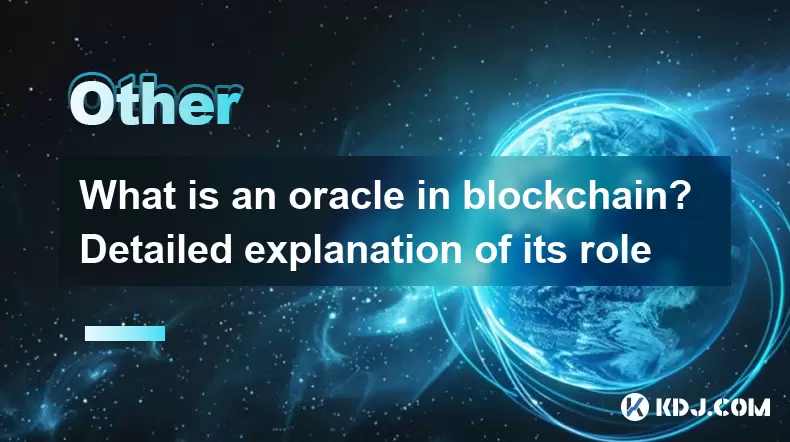
What is an oracle in blockchain? Detailed explanation of its role
Jun 21,2025 at 06:14am
Understanding the Concept of an Oracle in BlockchainIn the realm of blockchain technology, an oracle is a trusted third-party service that connects smart contracts with real-world data. Smart contracts are self-executing agreements where the terms are written directly into code and run on a blockchain network. However, these contracts operate in a close...
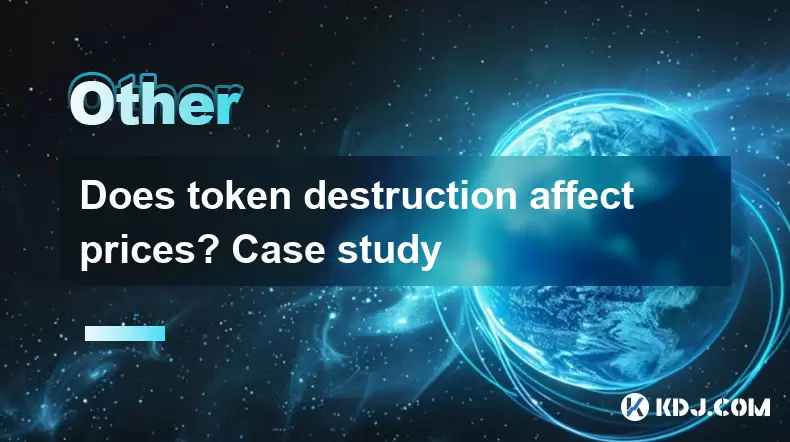
Does token destruction affect prices? Case study
Jun 22,2025 at 02:50am
Understanding Token DestructionToken destruction, commonly referred to as token burning, is a process where a portion of cryptocurrency tokens is permanently removed from circulation. This is typically done by sending the tokens to a non-recoverable wallet address, effectively reducing the total supply. Projects may implement token burns to create scarc...
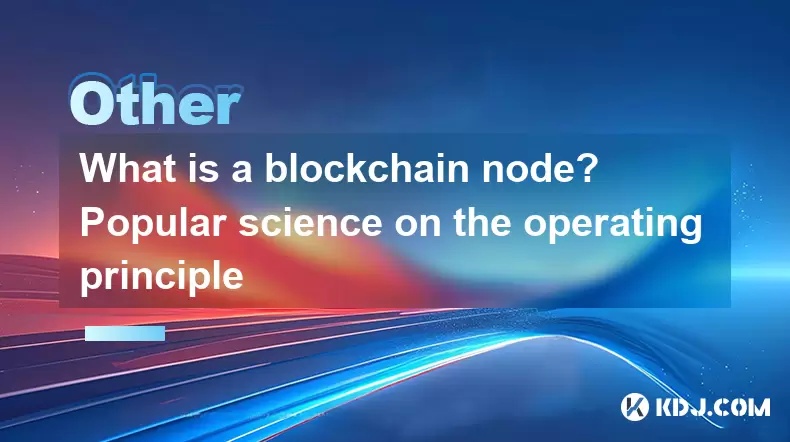
What is a blockchain node? Popular science on the operating principle
Jun 22,2025 at 11:00pm
Understanding the Basics of a Blockchain NodeA blockchain node is essentially a computer connected to a blockchain network that participates in validating and storing transaction data. Each node plays a critical role in maintaining the integrity, transparency, and decentralization of the blockchain. Unlike traditional centralized systems where a single ...
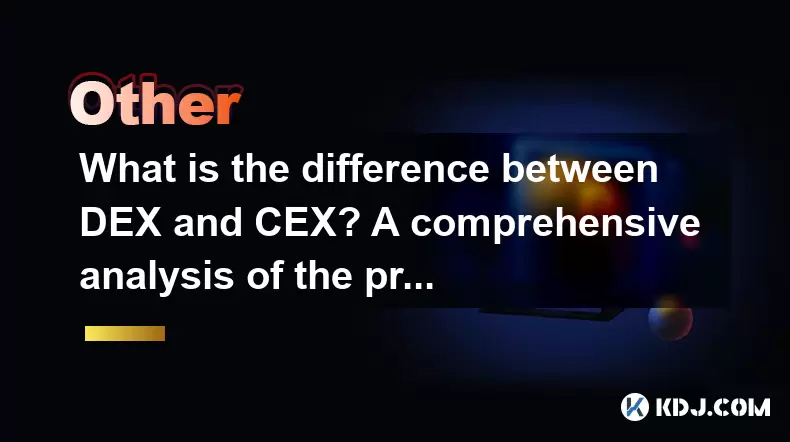
What is the difference between DEX and CEX? A comprehensive analysis of the pros and cons
Jun 24,2025 at 09:42am
What is a DEX (Decentralized Exchange)?A DEX, or Decentralized Exchange, operates without a central authority. Unlike traditional platforms, DEXs allow users to trade cryptocurrencies directly from their wallets. These exchanges rely on smart contracts to facilitate transactions, ensuring that no intermediary holds user funds. One of the most notable fe...
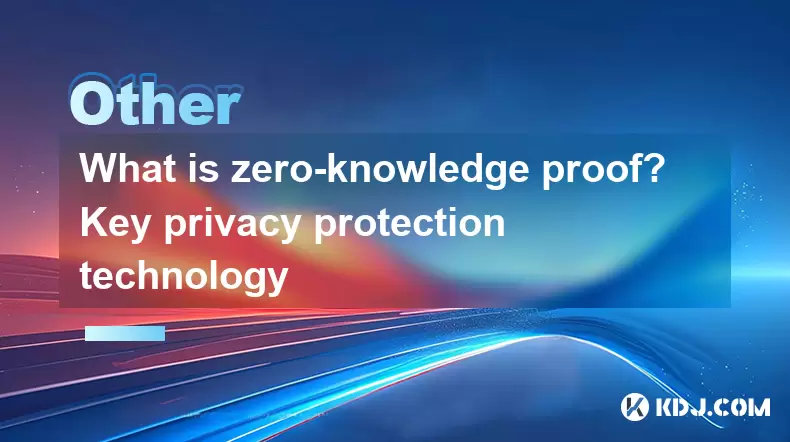
What is zero-knowledge proof? Key privacy protection technology
Jun 22,2025 at 07:29pm
Understanding Zero-Knowledge ProofZero-knowledge proof (ZKP) is a cryptographic method that allows one party to prove to another party that they know a value or information without revealing the actual content of that information. This concept is particularly important in the realm of privacy protection technologies, especially within blockchain and cry...
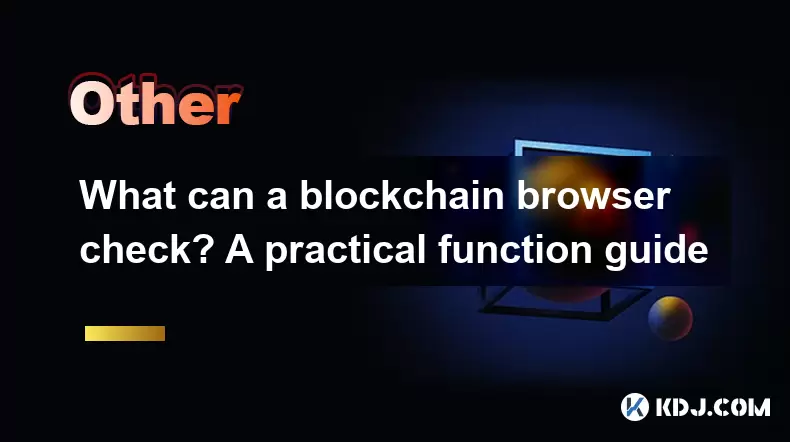
What can a blockchain browser check? A practical function guide
Jun 20,2025 at 07:35pm
Understanding the Role of a Blockchain BrowserA blockchain browser serves as a powerful tool for anyone interacting with blockchain networks. It allows users to explore, verify, and analyze data stored on the blockchain in real time. Unlike traditional ledgers or databases that are centralized, blockchains are decentralized and publicly accessible. This...

What is an oracle in blockchain? Detailed explanation of its role
Jun 21,2025 at 06:14am
Understanding the Concept of an Oracle in BlockchainIn the realm of blockchain technology, an oracle is a trusted third-party service that connects smart contracts with real-world data. Smart contracts are self-executing agreements where the terms are written directly into code and run on a blockchain network. However, these contracts operate in a close...

Does token destruction affect prices? Case study
Jun 22,2025 at 02:50am
Understanding Token DestructionToken destruction, commonly referred to as token burning, is a process where a portion of cryptocurrency tokens is permanently removed from circulation. This is typically done by sending the tokens to a non-recoverable wallet address, effectively reducing the total supply. Projects may implement token burns to create scarc...

What is a blockchain node? Popular science on the operating principle
Jun 22,2025 at 11:00pm
Understanding the Basics of a Blockchain NodeA blockchain node is essentially a computer connected to a blockchain network that participates in validating and storing transaction data. Each node plays a critical role in maintaining the integrity, transparency, and decentralization of the blockchain. Unlike traditional centralized systems where a single ...

What is the difference between DEX and CEX? A comprehensive analysis of the pros and cons
Jun 24,2025 at 09:42am
What is a DEX (Decentralized Exchange)?A DEX, or Decentralized Exchange, operates without a central authority. Unlike traditional platforms, DEXs allow users to trade cryptocurrencies directly from their wallets. These exchanges rely on smart contracts to facilitate transactions, ensuring that no intermediary holds user funds. One of the most notable fe...

What is zero-knowledge proof? Key privacy protection technology
Jun 22,2025 at 07:29pm
Understanding Zero-Knowledge ProofZero-knowledge proof (ZKP) is a cryptographic method that allows one party to prove to another party that they know a value or information without revealing the actual content of that information. This concept is particularly important in the realm of privacy protection technologies, especially within blockchain and cry...

What can a blockchain browser check? A practical function guide
Jun 20,2025 at 07:35pm
Understanding the Role of a Blockchain BrowserA blockchain browser serves as a powerful tool for anyone interacting with blockchain networks. It allows users to explore, verify, and analyze data stored on the blockchain in real time. Unlike traditional ledgers or databases that are centralized, blockchains are decentralized and publicly accessible. This...
See all articles

























































































